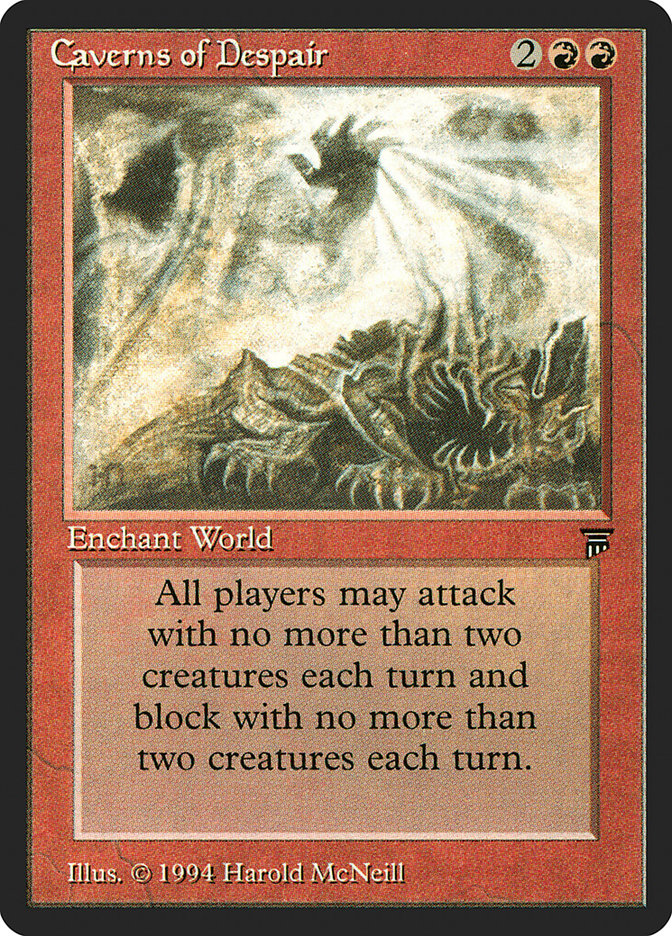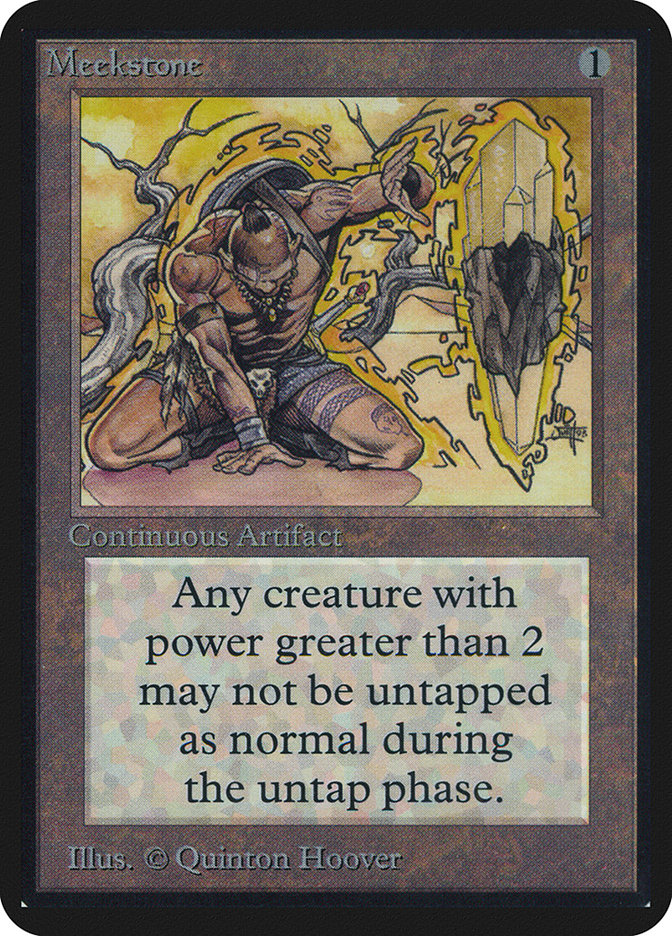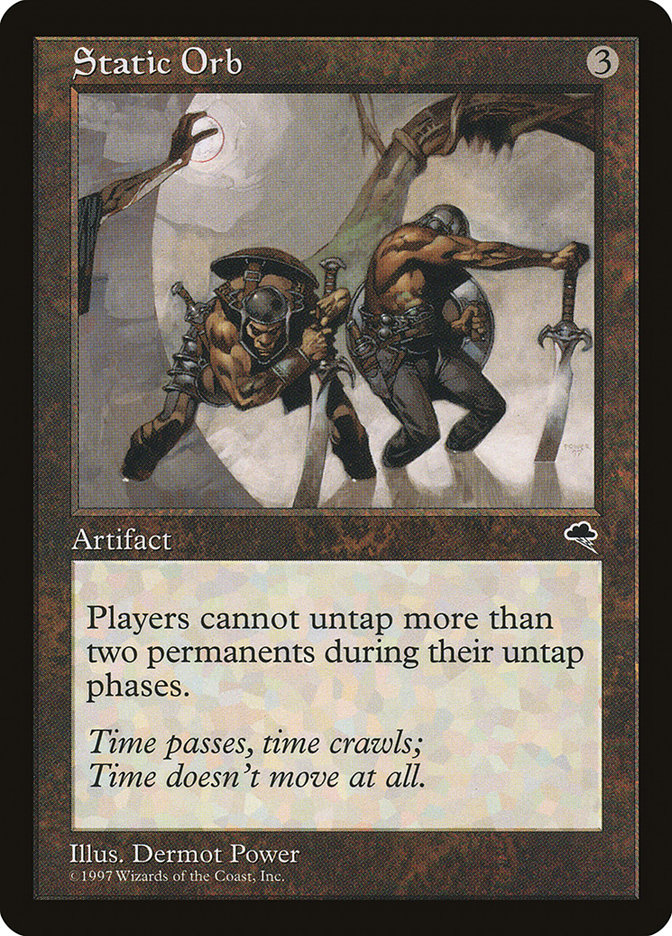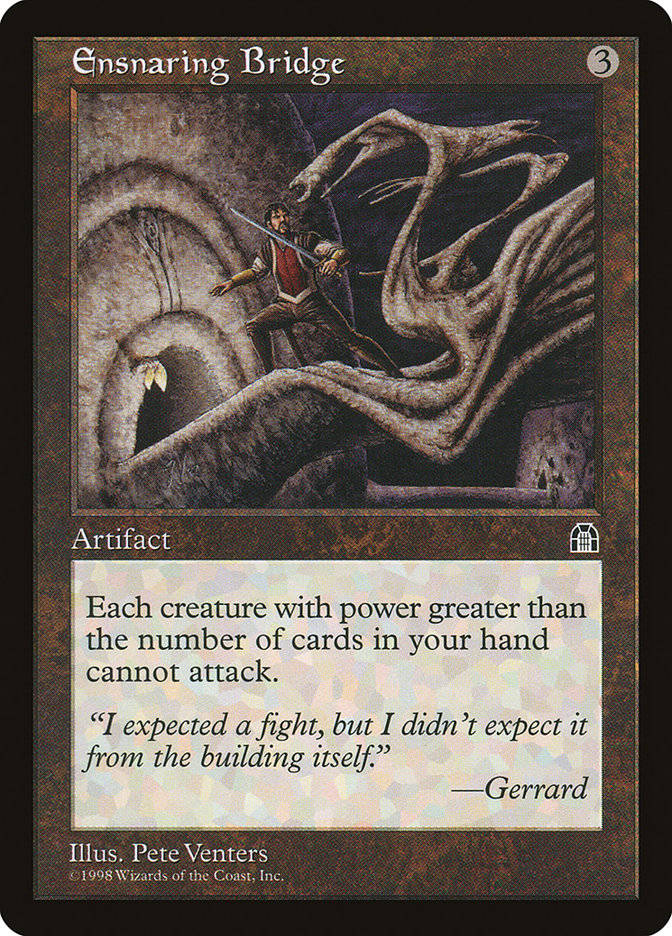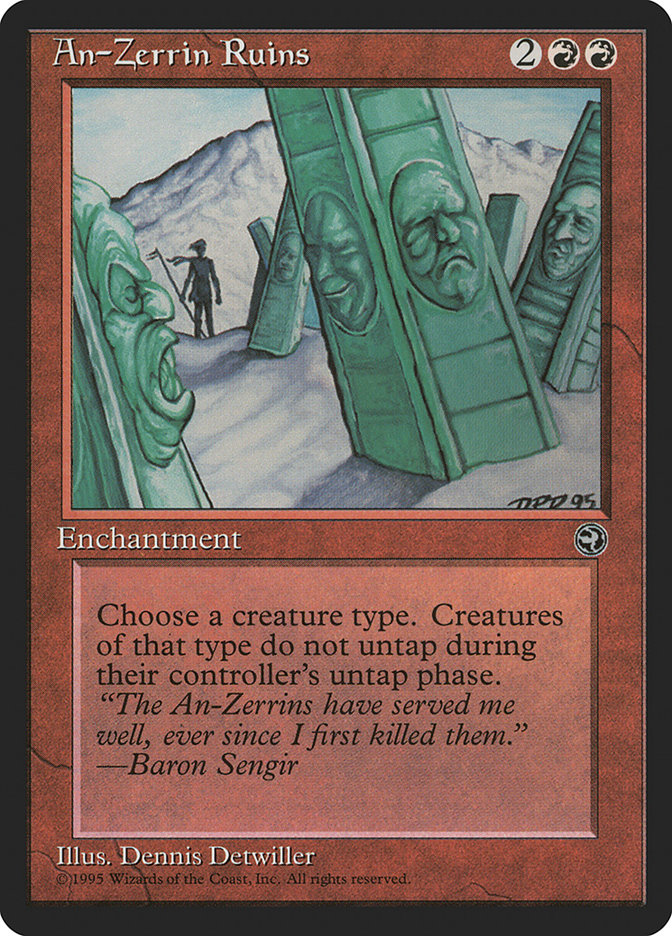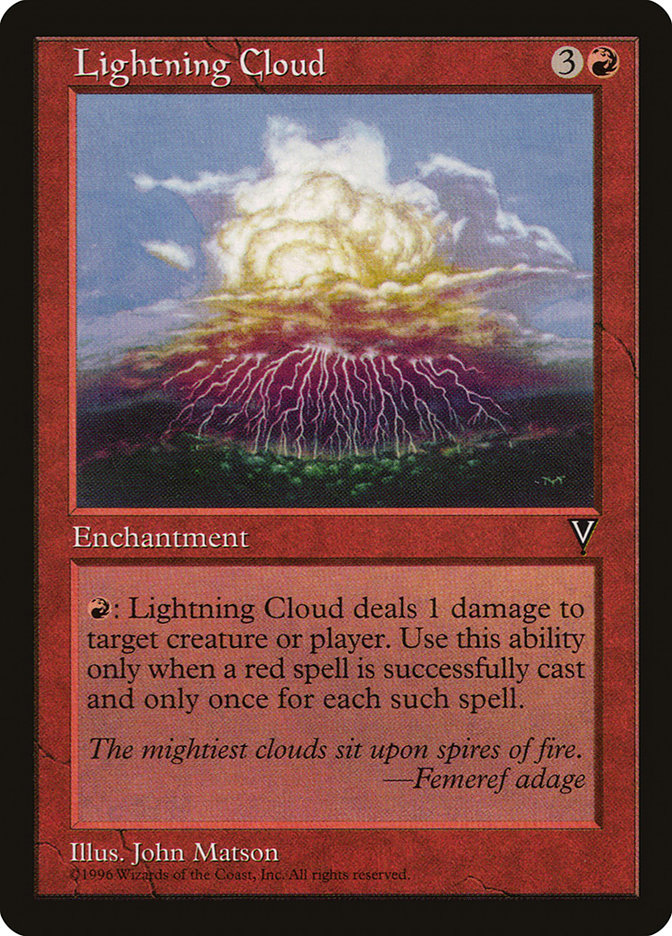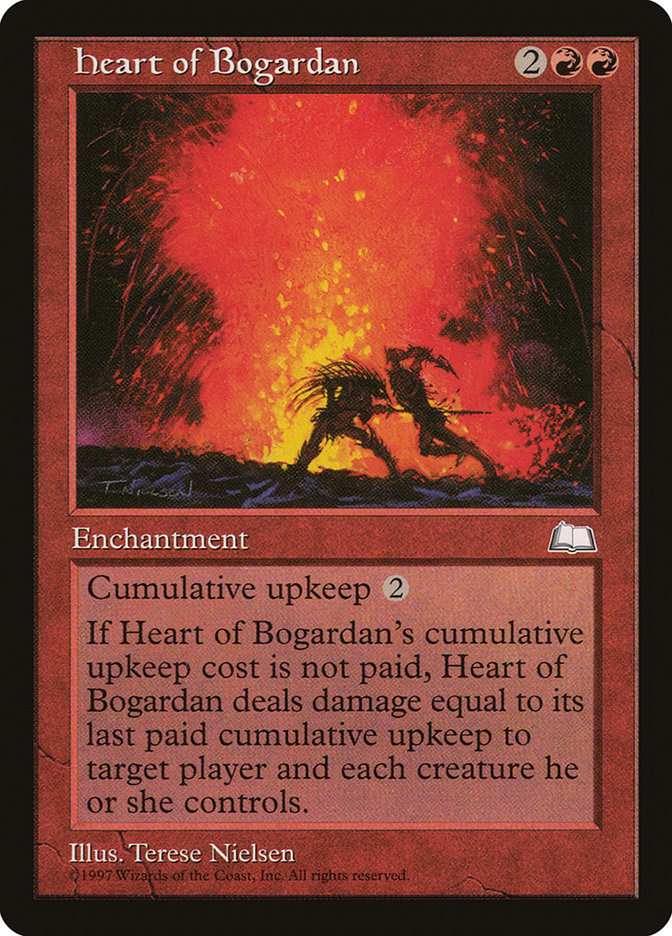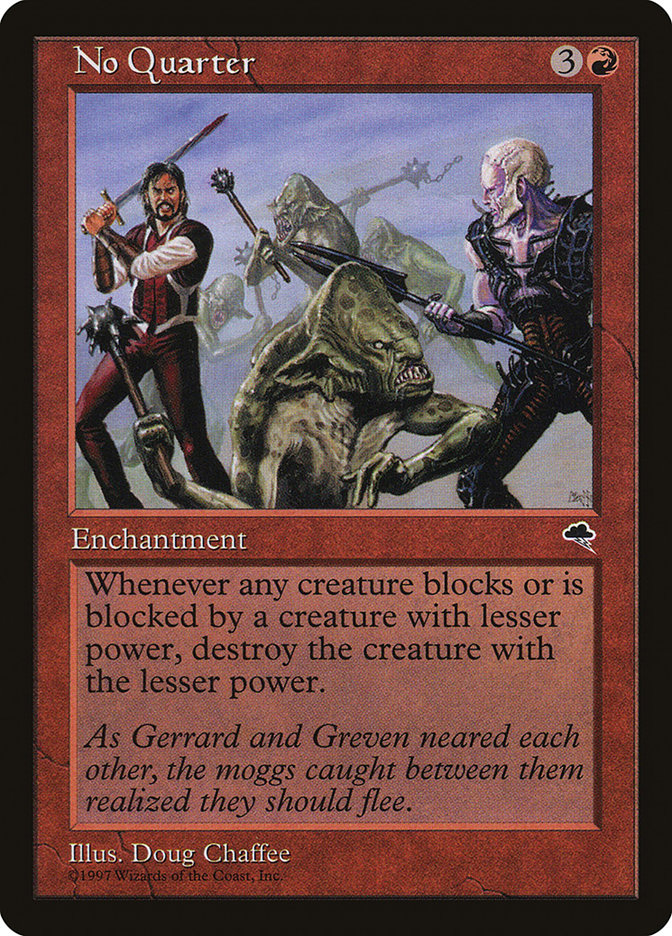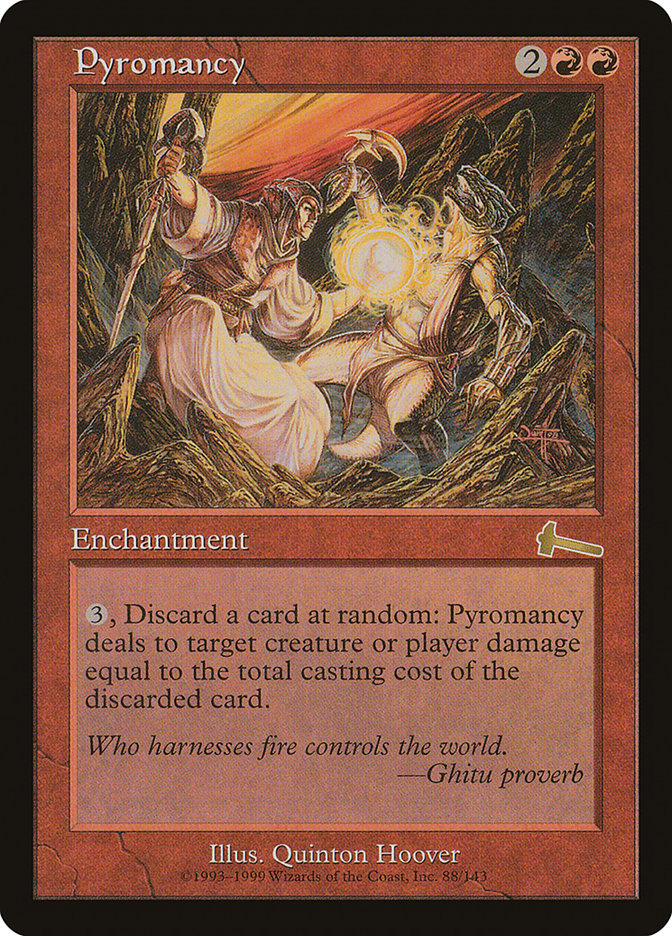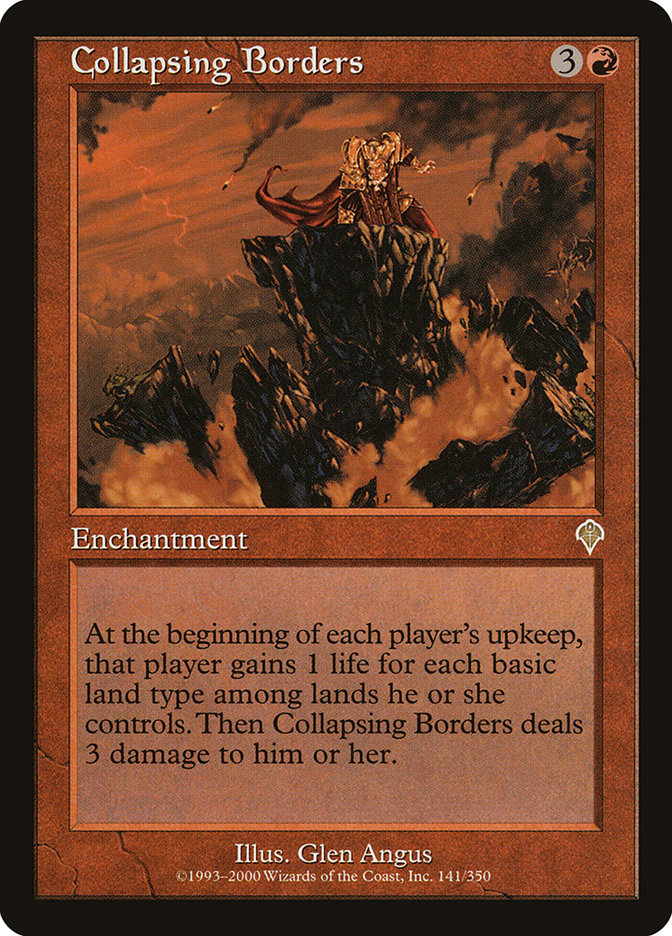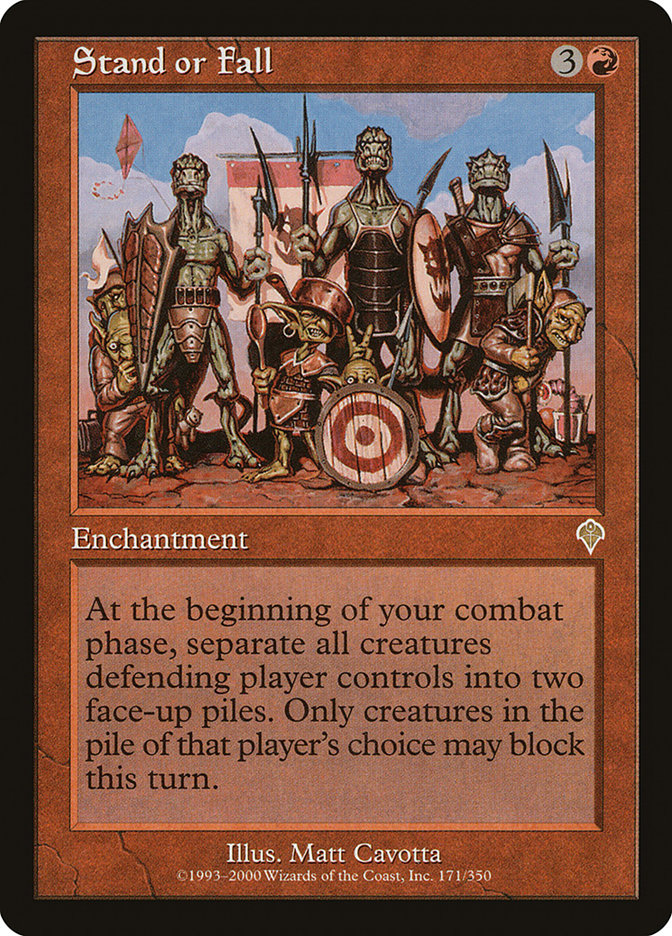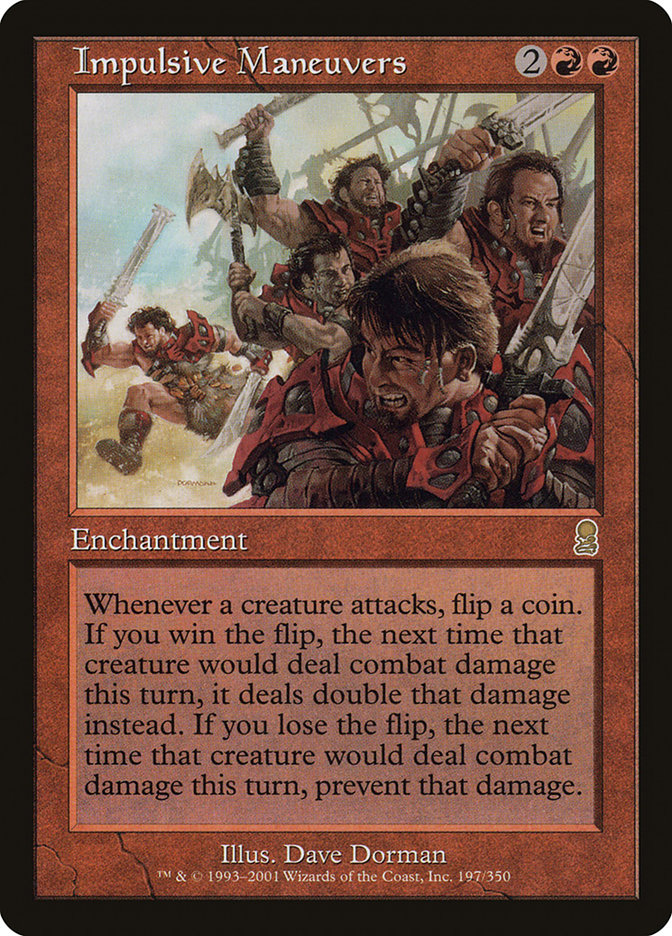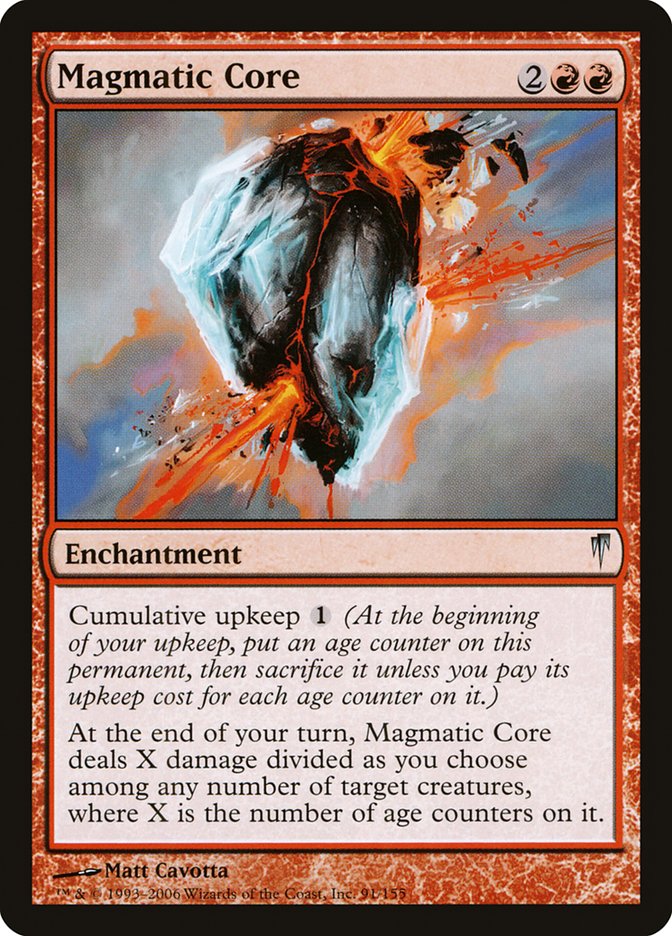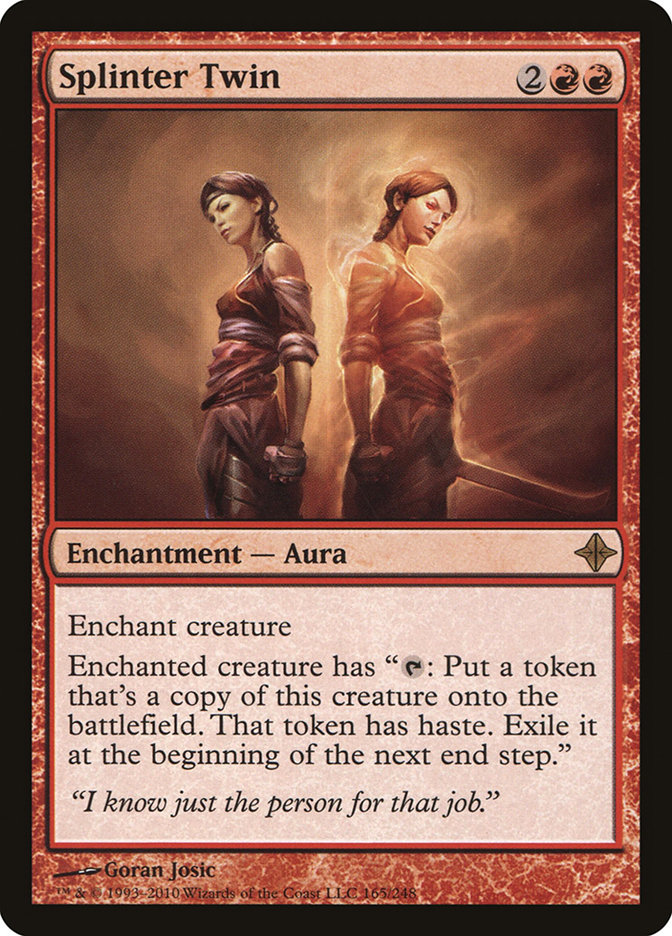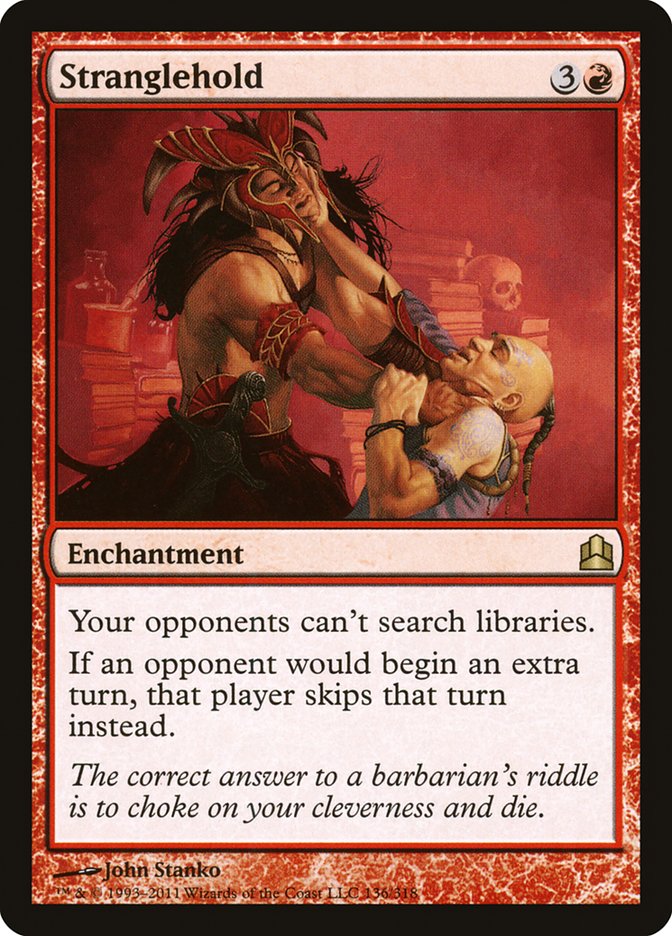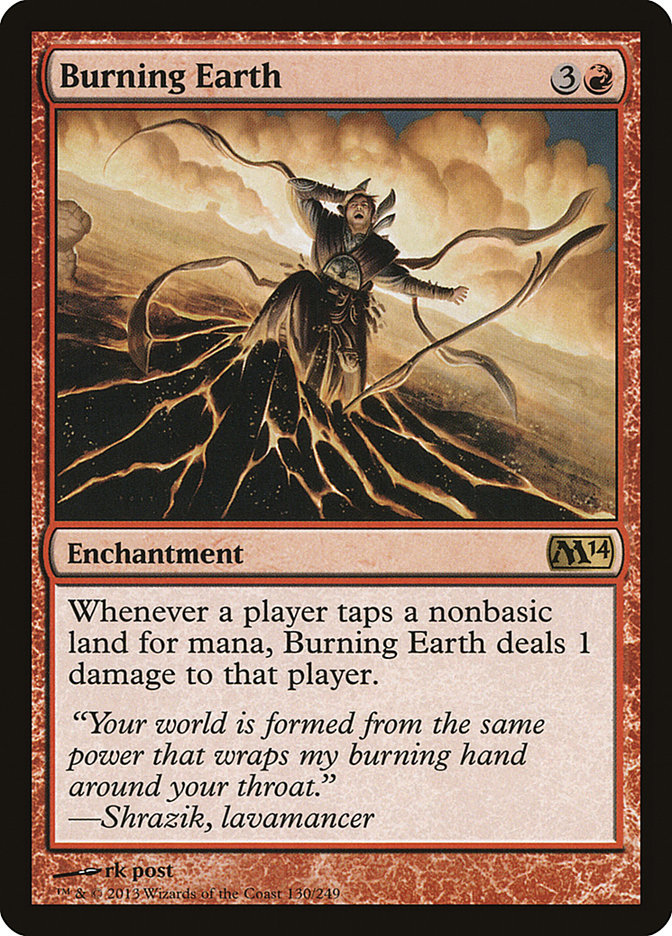Caverns of Despair MTG Card
| Mana cost | |
| Converted mana cost | 4 |
| Rarity | Rare |
| Type | World Enchantment |
| Released | 1994-06-01 |
| Set symbol | |
| Set name | Legends |
| Set code | LEG |
| Number | 136 |
| Frame | 1993 |
| Layout | Normal |
| Border | Black |
| Illustred by | Harold McNeill |
Text of card
All players may attack with no more than two creatures each turn and block with no more than two creatures each turn.
Cards like Caverns of Despair
Caverns of Despair is an intriguing control piece in Magic: The Gathering. It bears resemblance to cards like Meekstone, which also restricts creatures’ abilities to attack. Caverns of Despair limits each player to attack with only two creatures per turn, a significant chokehold in creature-heavy strategies. Meekstone, although similar in its controlling effect, targets creatures based on power, only keeping those with power 3 or greater from untapping during their controller’s untap step.
Examining another parallel, Static Orb serves as a more extensive lockdown card, affecting all untap phases by allowing only two permanents to untap. While Static Orb has a broader impact, it also hinders the controller’s board, unlike Caverns of Despair which only affects combat capabilities. Then there’s the iconic Ensnaring Bridge, creating a barrier for creature attacks based on the number of cards in a player’s hand. While Ensnaring Bridge can more efficiently lock out creature attacks entirely under the right circumstances, it does not offer the blanket limitation that Caverns of Despair does, which is agnostic of hand size.
Ultimately, Caverns of Despair occupies a unique position in Magic: The Gathering as a control card. Its particular brand of combat limitation presents a distinct strategy to manipulate the battlefield, standing out amidst a diverse array of similar control cards.
Cards similar to Caverns of Despair by color, type and mana cost
Card Pros
Card Advantage: Although Caverns of Despair doesn’t directly draw cards, the ability to restrict each opponent to only two attacks per turn can provide a subtle form of card advantage through battlefield control. In multi-player games, it can overwhelmingly tilt the balance as it affects all opponents, conserving your resources while they deplete theirs.
Resource Acceleration: Caverns of Despair is not directly linked to resource acceleration; however, by inhibiting the number of creature attacks, it allows you to focus your mana and other resources on developing your board instead of defending. This indirect effect maintains your momentum, particularly in mid to late-game scenarios where every resource counts.
Instant Speed: Caverns of Despair itself is not an instant, but its static ability operates in a way that gives you instant-speed control over combat phases. It allows you to dictate the pace of the game, preserving the element of surprise and the ability to adapt your strategy with fewer immediate threats. In this sense, it grants you a strategic acceleration that keeps opponents on their toes.
Card Cons
Discard Requirement: One of the critical downsides of using Caverns of Despair is its tendency to hamper your strategic options. The card’s effect influences both you and your opponent, forcing a restriction on the number of creatures that can attack. This might backfire if your deck strategy relies on swarming the battlefield with numerous attackers.
Specific Mana Cost: Caverns of Despair comes with a specific mana requirement that can be challenging to meet in multicolored decks. The card requires a payment of two red and two colorless mana, which can be a steep demand in a deck that doesn’t prioritize red mana or runs on a tight mana curve.
Comparatively High Mana Cost: With a reliance on an investment of four mana to cast, the card stands at a higher end on the mana curve. In comparison, there are alternative cards within the same mana range that could provide more immediate impact or versatile solutions, potentially making Caverns of Despair a less attractive choice for certain strategies.
Reasons to Include in Your Collection
Versatility: Caverns of Despair is adaptable to various deck builds that aim to control the battlefield. Its ongoing effect can severely limit opponents’ attack strategies, proving useful regardless of the fluctuating meta.
Combo Potential: This card has synergy with strategies that thrive on restricting enemy creatures. It works well with cards that force your opponent to commit more creatures to the board, setting up for powerful board wipes or punishing effects.
Meta-Relevance: In game formats where battles can shift towards large-scale creature confrontations, Caverns of Despair stands as a tactical inclusion. Its ability to throttle opponents’ attack options can be the key to overwhelming dominance in creature-heavy metas.
How to beat
Caverns of Despair, an intriguing old-school card from the Legends expansion, presents a unique challenge on the battlefield. It limits each player to only two attacking creatures each turn, radically altering the flow of the game. To outmaneuver this card, consider options such as enchantment removal spells or strategies that don’t rely on attacking with a large number of creatures.
One approach is to utilize spells like Naturalize or Disenchant which directly destroy enchantments, rendering Caverns of Despair obsolete. Alternatively, focusing on powerful individual creatures or alternative win conditions such as combo finishes or planeswalker abilities might circumvent the card’s restrictions. Direct damage spells and abilities can also chip away at your opponent’s life total without engaging the combat step. By being flexible and adaptive, you can overcome the constraints imposed by Caverns of Despair and secure your victory.
Adapting your gameplay to manage this MTG card will prove to be a test of strategic prowess and deck-building acumen. Players who effectively navigate the restrictions of Caverns of Despair demonstrate a higher level of skill and understanding of the game’s deep mechanics.
Where to buy
If you're looking to purchase Caverns of Despair MTG card by a specific set like Legends, there are several reliable options to consider. One of the primary sources is your local game store, where you can often find booster packs, individual cards, and preconstructed decks from current and some past sets. They often offer the added benefit of a community where you can trade with other players.
For a broader inventory, particularly of older sets, online marketplaces like TCGPlayer, Card Kingdom and Card Market offer extensive selections and allow you to search for cards from specific sets. Larger e-commerce platforms like eBay and Amazon also have listings from various sellers, which can be a good place to look for sealed product and rare finds.
Additionally, Magic’s official site often has a store locator and retailer lists for finding Wizards of the Coast licensed products. Remember to check for authenticity and the condition of the cards when purchasing, especially from individual sellers on larger marketplaces.
Below is a list of some store websites where you can buy the Caverns of Despair and other MTG cards:
 BUY NOW
BUY NOW BurnMana is an official partner of TCGPlayer
- eBay
- Card Kingdom
- Card Market
- Star City Games
- CoolStuffInc
- MTG Mint Card
- Hareruya
- Troll and Toad
- ABU Games
- Card Hoarder Magic Online
- MTGO Traders Magic Online
See MTG Products
Legalities
Magic the Gathering formats where Caverns of Despair has restrictions
| Format | Legality |
|---|---|
| Oldschool | Legal |
| Commander | Legal |
| Legacy | Legal |
| Oathbreaker | Legal |
| Vintage | Legal |
| Duel | Legal |
| Predh | Legal |
Rules and information
The reference guide for Magic: The Gathering Caverns of Despair card rulings provides official rulings, any errata issued, as well as a record of all the functional modifications that have occurred.
| Date | Text |
|---|---|
| 2008-10-01 | This has the supertype world. When a world permanent enters the battlefield, any world permanents that were already on the battlefield are put into their owners’ graveyards. This is a state-based action called the “world rule.” The new world permanent stays on the battlefield. If two world permanents enter the battlefield at the same time, they’re both put into their owners’ graveyards. |
